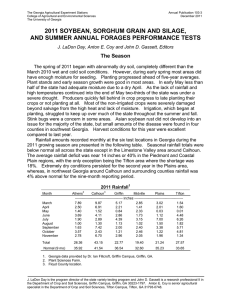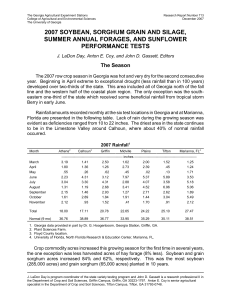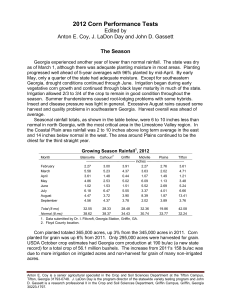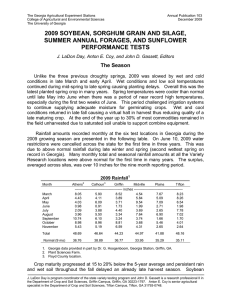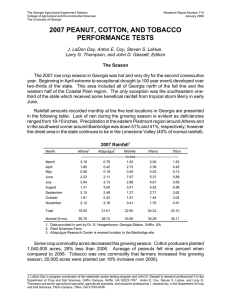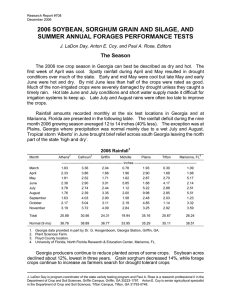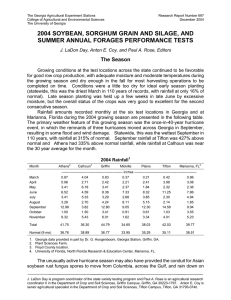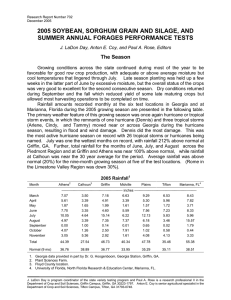Document 13150657
advertisement
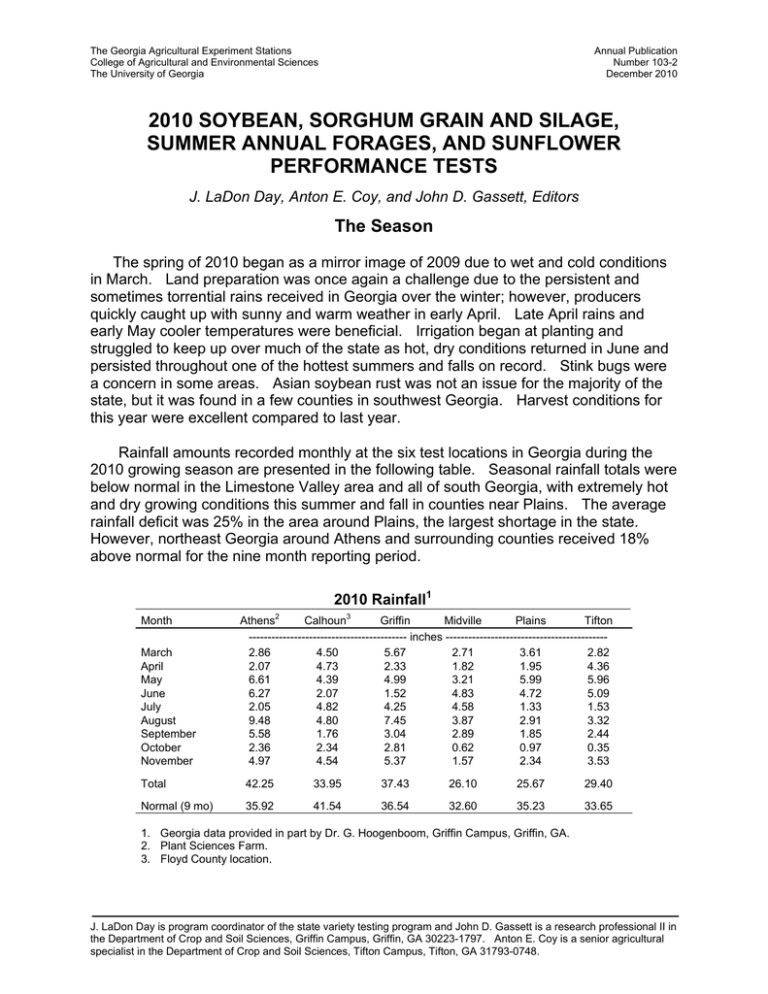
The Georgia Agricultural Experiment Stations College of Agricultural and Environmental Sciences The University of Georgia Annual Publication Number 103-2 December 2010 2010 SOYBEAN, SORGHUM GRAIN AND SILAGE, SUMMER ANNUAL FORAGES, AND SUNFLOWER PERFORMANCE TESTS J. LaDon Day, Anton E. Coy, and John D. Gassett, Editors The Season The spring of 2010 began as a mirror image of 2009 due to wet and cold conditions in March. Land preparation was once again a challenge due to the persistent and sometimes torrential rains received in Georgia over the winter; however, producers quickly caught up with sunny and warm weather in early April. Late April rains and early May cooler temperatures were beneficial. Irrigation began at planting and struggled to keep up over much of the state as hot, dry conditions returned in June and persisted throughout one of the hottest summers and falls on record. Stink bugs were a concern in some areas. Asian soybean rust was not an issue for the majority of the state, but it was found in a few counties in southwest Georgia. Harvest conditions for this year were excellent compared to last year. Rainfall amounts recorded monthly at the six test locations in Georgia during the 2010 growing season are presented in the following table. Seasonal rainfall totals were below normal in the Limestone Valley area and all of south Georgia, with extremely hot and dry growing conditions this summer and fall in counties near Plains. The average rainfall deficit was 25% in the area around Plains, the largest shortage in the state. However, northeast Georgia around Athens and surrounding counties received 18% above normal for the nine month reporting period. 2010 Rainfall1 Month March April May June July August September October November Athens2 Calhoun3 Griffin Midville Plains Tifton ------------------------------------------ inches ------------------------------------------2.86 4.50 5.67 2.71 3.61 2.82 2.07 4.73 2.33 1.82 1.95 4.36 6.61 4.39 4.99 3.21 5.99 5.96 6.27 2.07 1.52 4.83 4.72 5.09 2.05 4.82 4.25 4.58 1.33 1.53 9.48 4.80 7.45 3.87 2.91 3.32 5.58 1.76 3.04 2.89 1.85 2.44 2.36 2.34 2.81 0.62 0.97 0.35 4.97 4.54 5.37 1.57 2.34 3.53 Total 42.25 33.95 37.43 26.10 25.67 29.40 Normal (9 mo) 35.92 41.54 36.54 32.60 35.23 33.65 1. Georgia data provided in part by Dr. G. Hoogenboom, Griffin Campus, Griffin, GA. 2. Plant Sciences Farm. 3. Floyd County location. J. LaDon Day is program coordinator of the state variety testing program and John D. Gassett is a research professional II in the Department of Crop and Soil Sciences, Griffin Campus, Griffin, GA 30223-1797. Anton E. Coy is a senior agricultural specialist in the Department of Crop and Soil Sciences, Tifton Campus, Tifton, GA 31793-0748. Georgia soybean producers planted 275,000 acres this year, a 42% decrease from last year. The state per acre yield for soybeans was 30 bushels, the same as in 2007. Soybean production was 7.65 million bushels, 48% less than last year and the least produced in four years. Sorghum producers planted 45,000 acres in Georgia this year, 19% less than last year. All forage production acres in Georgia remained the same as last year, 700,000 total acres.
